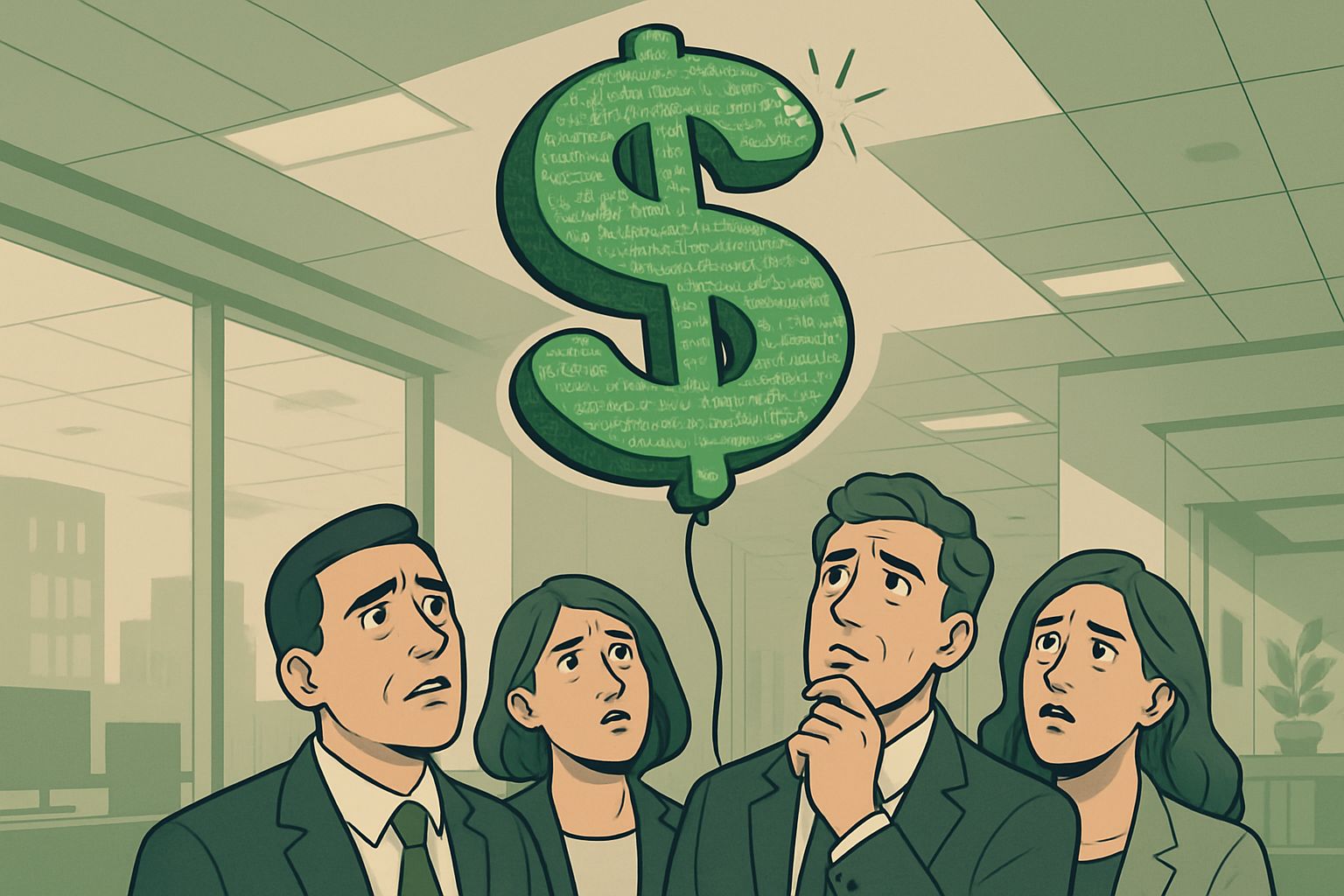
AI CERTS
20 hours ago
Is an LLM-Driven Market Bubble About to Burst?
Meanwhile, Alphabet chief Sundar Pichai echoed similar fears, citing widespread 'irrationality' in AI spending. The debate is not new, yet 2025’s funding pace amplifies every signal. Moreover, McKinsey still projects trillions in annual generative AI value, deepening the paradox. Investors must separate hype from execution before Valuation metrics detach from Reality. This article dissects the warning, presents data, and offers actionable guidance. Additionally, we map scenarios and certifications that help leaders navigate coming shifts. Read on for an evidence based outlook grounded in facts, not fervor.
LLM Investment Frenzy Phase
Capital flowed into large language model startups at record speed over the past 18 months. Furthermore, CB Insights data shows more than $25 billion allocated to foundational model builders during 2024 alone. Many deals closed within days, often without audited revenue or clear paths to profit. In contrast, adjacent AI subfields like biology or chemistry received a fraction of that funding. Delangue argues this distortion masks operational costs lurking beneath glamorous demos and benchmark charts. Experts position today’s funding spike at the crest of the Hype Cycle.

These numbers illustrate intense concentration within the present Market Bubble. However, deeper forces drive the rush, as the next section explains.
Delangue Issues Stark Warning
Delangue stated, “I think we’re in an LLM bubble, and it might burst next year.” Consequently, board members asked whether current spending aligns with realistic adoption curves. He clarified that the broader AI field remains healthy; only oversize frontier models look exposed. Moreover, he revealed Hugging Face still holds half of its $400 million war chest in cash. That liquidity lets the company pivot if funding markets tighten suddenly. Nevertheless, suppliers lacking similar reserves could face painful down rounds or abrupt consolidation.
The CEO’s words sharpen the contours of a looming Market Bubble correction. Consequently, investors need concrete metrics, not aspirational pitch decks, before deploying fresh capital.
Valuation Risks For Enterprises
Enterprise buyers rarely care about parameter counts; they care about vendor stability and price. However, inflated Valuation multiples can hide fragile unit economics, especially when inference costs stay high. Google’s warning underscores that even cash rich giants feel pressure from runaway compute bills. In contrast, CFOs are modelling worst-case scenarios where token charges exceed savings from automation. Subsequently, procurement teams demand clauses that shift performance or compliance risks back to providers. Gartner graphs show the technology sliding into the Trough phase of the Hype Cycle.
Over optimistic forecasts widen the Market Bubble by delaying tough commercial conversations. Therefore, leaders must stress test assumptions before contractual commitments escalate exposure.
Specialized Models Gain Ground
Smaller, domain tuned models often match required accuracy at a fraction of LLM runtime costs. Moreover, retrieval augmented pipelines permit targeted knowledge injection without retraining enormous networks. Banks, insurers, and public agencies already pilot compact architectures for chat, summarization, and document extraction. Consequently, open source hubs like Hugging Face see soaring downloads for task specific checkpoints. Professionals can enhance expertise through the AI Architect certification. The curriculum covers scalable deployment, security, and cost governance for specialized AI services.
These practical advantages deflate the current Market Bubble by shifting focus to measurable outcomes. Meanwhile, the following section reviews historical hype patterns and lessons.
Historical Tech Hype Patterns
Every platform shift experiences a classic Hype Cycle, from excitement through disillusionment to productivity. Dot-com telecom booms and clean-tech surges followed similar trajectories. Nevertheless, each cycle rewarded firms that prepared for Reality rather than chasing headlines. Subsequently, disciplined operators captured lasting value once capital costs normalised.
- 1999: NASDAQ peaked at 5,048 before a 78% plunge.
- 2011: Solar panel overcapacity erased multiple unicorns within 24 months.
- 2021: SPAC frenzy saw 50% average decline within one year.
Consequently, recognizing signals early can prevent catastrophic write-downs when sentiment turns. History reminds us that each Market Bubble feels rational until liquidity vanishes. In contrast, the next section outlines strategic responses investors can adopt now.
Investor Strategies Post Correction
Diversification remains the simplest defence. Furthermore, many funds now balance frontier bets with cash-flowing tooling firms. Managers also recheck Valuation models using discounted cash flows rather than comparable multiples. Meanwhile, some allocate capital to hardware suppliers, hedging whichever model architecture prevails. By tracking the Hype Cycle stage, managers time entries and exits more rationally. Others prefer service providers that integrate multiple engines, insulating them from single vendor failure. Nevertheless, governance clauses must anticipate regulatory flux, especially around data provenance and safety audits.
Such discipline can soften the Market Bubble fallout and preserve dry powder. Therefore, operational teams should simultaneously prepare for direct budget impacts.
Preparing For Possible Downturn
CIOs can start with scenario planning sessions covering traffic spikes, API throttling, and pricing adjustments. Additionally, engineering leads should benchmark specialized models against frontier services quarterly. Finance teams must reassess Valuation assumptions embedded in goodwill or intangibles on balance sheets. In contrast, risk officers should revisit continuity plans for GPU supply or cloud outages. Reality checks include verifying contract exit clauses and data deletion guarantees. Moreover, leadership workshops can simulate press, customer, and compliance crises to uncover blind spots.
Proactive preparedness limits potential Market Bubble damage and protects stakeholder trust. Subsequently, the conclusion distills key insights and next steps.
Conclusion And Next Steps
Clément Delangue’s caution resonates because it focuses on fundamentals, not theatrics. However, data show genuine demand for applied AI when costs and safeguards align. Investors ignoring those details risk amplifying the Market Bubble and losing flexibility. Conversely, disciplined operators who read the Hype Cycle signals can translate turbulence into opportunity. Enterprises that validate assumptions, diversify exposure, and train staff safeguard against painful Reality checks. Consequently, regulators, boards, and engineering teams should share dashboards tracking spending and returns. Implementing insights from this analysis will help contain any future Market Bubble fallout. Finally, secure the AI Architect certification to elevate your strategic influence today.



